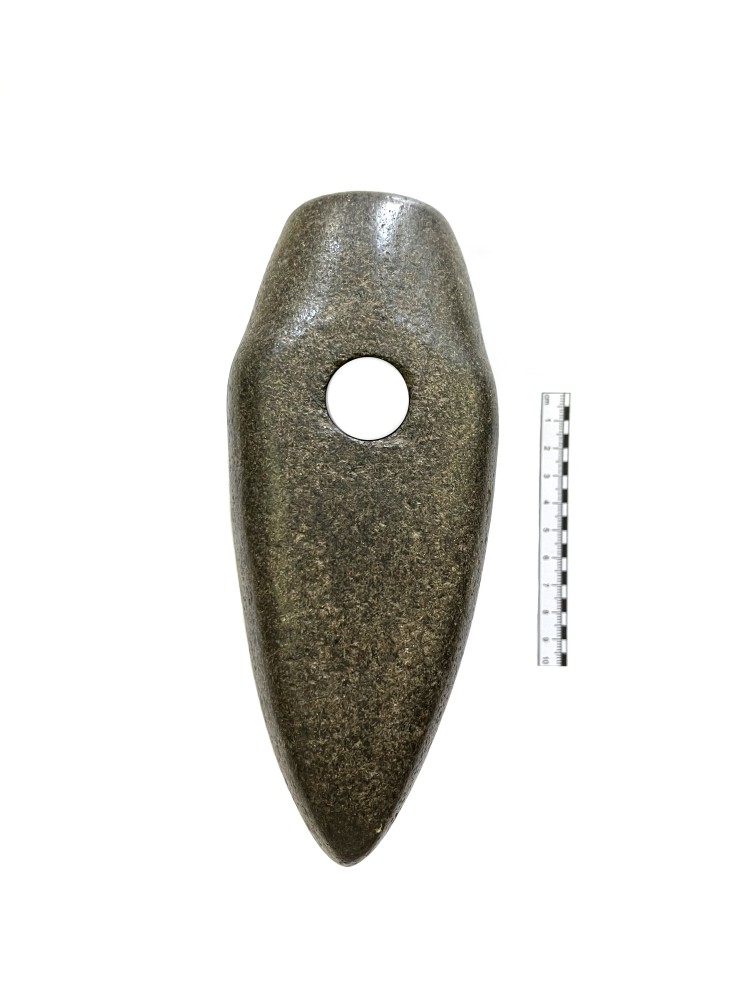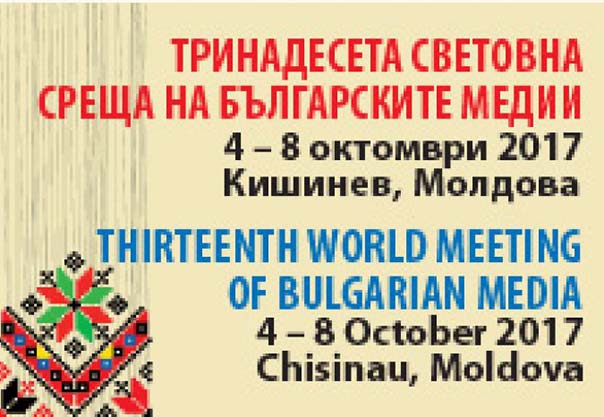#Exhibit of the Month
>>>

The artifact is a battle axe made from magmatic rock (diabase) of gray-brown color. It was accidentally discovered in 1966 within the territory of Aluniș village, Rîșcani district. Based on its morphological characteristics, the artifact can be attributed to the Catacomb culture (29th-22nd centuries BCE). The axe features a massive, elongated naviform body with slightly pronounced shoulders, a short and narrow edge that is flat and circular in cross-section. The blade is slightly curved. The hole was drilled in the maximum width of the object. It is circular in shape with a diameter of 2.2 cm. The surface of the artifact is meticulously polished, worked with great care, and shows no signs of damage or chipping. Dimensions: Length: 20.0 cm; Maximum width: 8.4 cm; Edge diameter: 5.0 cm; Blade width: 7.0 cm; Weight: 2.3 kg. Stone battle axes are characteristic of the Catacomb culture communities and are most often found as grave goods, deposited in tombs. Their presence in funerary complexes suggests a multifaceted functionality: weapons, social symbols, and ritual objects. Initially used as weapons, the axes became social symbols for their owners, later acquiring votive significance when deposited in tombs to serve the deceased in the afterlife. The social symbolic function of stone battle axes is indicated by the high-quality rocks used for their manufacture and the exceptionally meticulous craftsmanship. The large dimensions of the axe from Aluniș support this hypothesis and distinguish it from other examples. The discovery of stone battle axes outside a funerary complex may indicate their votive deposition. It is difficult to imagine that these exceptionally well-crafted pieces, made from high-quality rocks transported over great distances, could have been abandoned or lost accidentally. It is far more likely that they were deposited for magical-religious purposes, a possibility that may also apply to the stone axe discovered at Aluniș.

Virtual Tour
|

|
|
|
 |
  Events Archive Events Archive
13th World Meeting of Bulgarian media
October 5, 2017
On October 5, 2017, from 9:00 to 10:30, the National Museum of History of Moldova hosted the opening ceremony of the 13th World Meeting of Bulgarian Media. This year's theme was "Neighborhood Policies".
The Bulgarian World Media Forum held in Chisinau on 4th to 8th October 2017, was organized by the Bulgarian National News Agency, BTA, and the Bulgarian Media Association all over the world, in collaboration with the State Information Agency "Moldpres".
The World Meeting of Bulgarian Media is a professional forum that is held every year in a country where ethnic Bulgarians live. The 13th World Meeting of Bulgarian Media was attended by journalists from the written press, audiovisual and online media from Bulgaria, Moldova, Ukraine, Romania, Serbia, Spain, Vatican, the Netherlands, Hungary, Czech Republic, Greece, Cyprus, Israel, USA and Canada. The purpose of the forum is to communicate, build a network and establish collaborative relations between Bulgarian journalists everywhere, as well to provide an autonomous space for Bulgarian media communication with representatives of state institutions.
 |
The 13th World Meeting of Bulgarian Media was opened at the National Museum of History of Moldova by Bulgaria's Vice-President Iliana Yotova. The forum was also attended by the President of the Republic of Moldova, Igor Dodon, who addressed a greeting message to the Bulgarian journalists.
The exhibition "Born Free" prepared by the Bulgarian News Agency BTA was opened on the occasion of this event in the lobby of the museum.
|
 |
|
| |
 |
|
#Exhibit of the Month

The artifact is a battle axe made from magmatic rock (diabase) of gray-brown color. It was accidentally discovered in 1966 within the territory of Aluniș village, Rîșcani district. Based on its morphological characteristics, the artifact can be attributed to the Catacomb culture (29th-22nd centuries BCE)...
Read More >>
The National Museum of History of Moldova takes place among the most significant museum institutions of the Republic of Moldova, in terms of both its collection and scientific reputation.
©2006-2025 National Museum of History of Moldova
 31 August 1989 St., 121 A, MD 2012, Chisinau, Republic of Moldova
Phones: 31 August 1989 St., 121 A, MD 2012, Chisinau, Republic of Moldova
Phones:
Secretariat: +373 (22) 24-43-25
Department of Public Relations and Museum Education: +373 (22) 24-04-26
Fax: +373 (22) 24-43-69
E-mail: office@nationalmuseum.md
Technical Support: info@nationalmuseum.md
Web site administration and maintenance: Andrei EMILCIUC
|
| |
